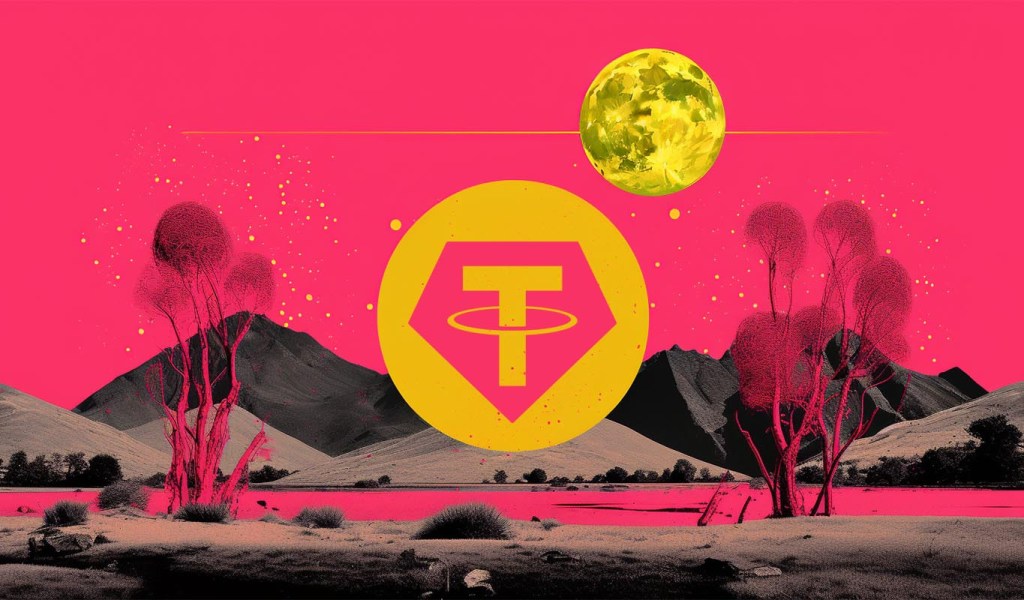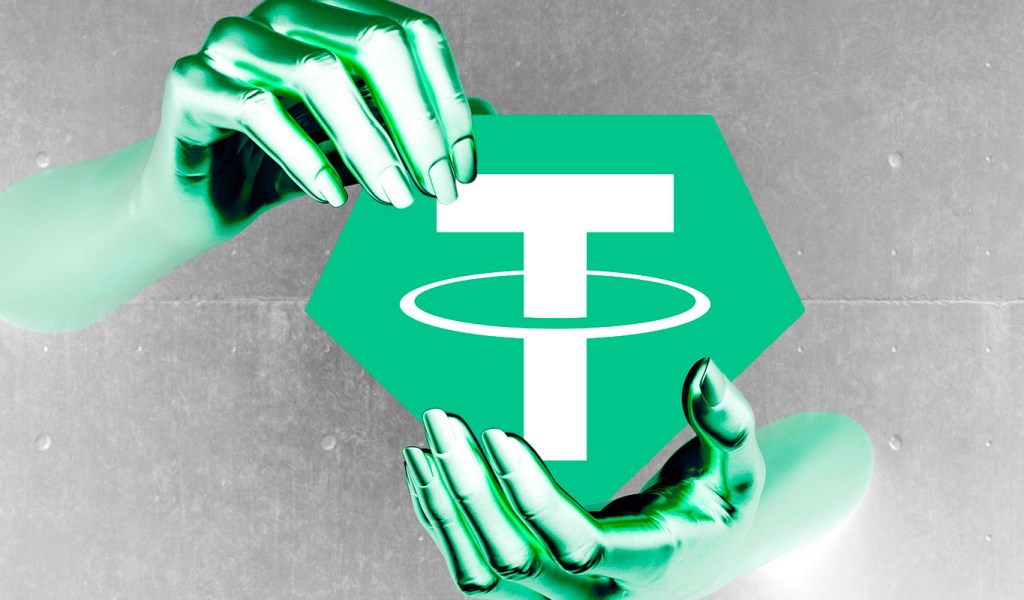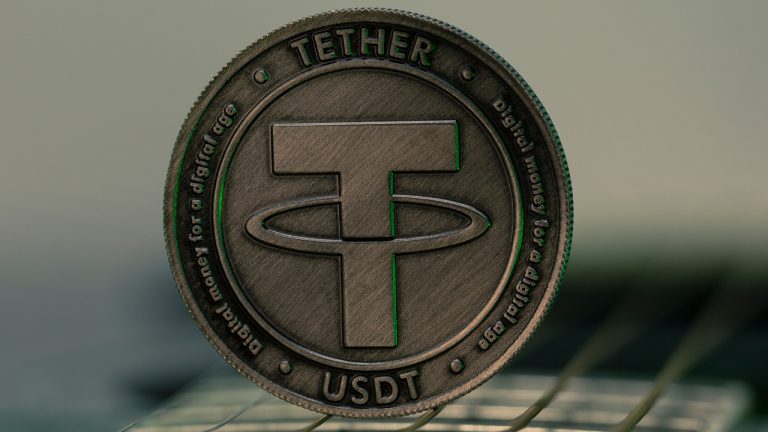
The on-chain patterns of the top two stablecoins by market cap could hint at when the crypto markets are gearing up for another leg up in price, according to the analytics firm Santiment. Santiment says in a new analysis that traders should monitor Tether (USDT) and US Dollar Coin’s (USDC) supply on exchanges because that […]
The post Tether (USDT) and USDC Hinting at Possible Next Move for Crypto Markets, According to Analytics Firm Santiment appeared first on The Daily Hodl.

Blockchain data reveals that stablecoin firms Circle and Tether have frozen coins linked to the recent multi-million-dollar Multichain exploit. Earlier this week, blockchain security firm PeckShield found that Multichain, a cross-chain crypto platform, saw its Fantom (FTM) bridge hacked to the tune of $126 million worth of digital assets. The crypto assets stolen include Chainlink […]
The post Stablecoin Issuers Circle and Tether Freeze Stablecoins Tied to Multichain Exploit: On-Chain Data appeared first on The Daily Hodl.

A web3 crypto cross-chain protocol has been hacked to the tune of over a hundred million dollars, according to one blockchain watchdog. New data from cybersecurity firm PeckShield reveals that bad actors were able to steal $126 million from the Multichain’s Fantom (FTM) bridge, including crypto assets such as Chainlink (LINK), Wrapped Bitcoin (wBTC), Wrapped […]
The post Web3 Crypto Project Multichain Hit With $126,000,000 Exploit: PeckShield appeared first on The Daily Hodl.

Crypto analytics platform Santiment says that whales are holding onto huge amounts of one digital asset class during the market correction. The market intelligence firm says that many whales and sharks are not cashing out of digital assets altogether during the downturn but instead parking their wealth in stablecoins. Stablecoins are digital assets with a […]
The post Whales Are Holding Massive Amounts of This Crypto Asset Class Amid Market Downturn, According to Santiment appeared first on The Daily Hodl.

Circle plans to launch USD Coin (USDC) natively on the Ethereum (ETH) scaling solution Arbitrum (ARB) on June 8th. The stablecoin issuer says this native USDC will be the official version of the Arbitrum ecosystem and will eventually replace the USDC currently on Arbitrum that is bridged from Ethereum. Explains the ETH scaling solution, “Arbitrum […]
The post Second-Largest Stablecoin To Launch ‘Natively’ on Ethereum Scaling Solution Arbitrum (ARB) Next Week appeared first on The Daily Hodl.

The Australian digital dollar was used in a trade for a U.S. dollar stablecoin using an Ethereum layer 2 blockchain.
Australia has successfully made its first foreign exchange transaction using eAUD as part of a live pilot for the country’s potential central bank digital currency (CBDC).
It comes amid a rising interest from countries around the world to learn about or launch central bank-issued digital currencies.
In a statement, blockchain infrastructure provider Canvas said on May 17 local time, crypto fund managers DigitalX and TAF Capital traded eAUD against the stablecoin USD Coin (USDC).
Canvas reported the transaction was settled instantly and touted it as a success over what it called the “slow, expensive and prone to errors” traditional FX and remittance networks.
The FX trade was part of a series of tests currently underway as the country explores possible use cases for a CBDC. The pilot program was launched by the Reserve Bank of Australia (RBA) in conjunction with the financial research institute the Digital Finance Cooperative Research Centre (DFCRC).
Canvas’ test explored use of eAUD in tokenized FX settlements, which could point towards the benefits of using the CBDC over fiat currencies and existing settlement platforms.
We’ll demonstrate the benefits of using CBDCs like eAUD in tokenized FX transactions using our privacy-focused Layer 2 Network and blockchain-based financial markets applications. Read more here https://t.co/RPjSF5B8s0
— CANVAS (@canvas_defi) March 6, 2023
The transaction was done on a decentralized app on Canvas’ “Connect” — an Ethereum layer 2 that uses StarkWare’s zero-knowledge (ZK) roll-up technology.
Canvas’ CEO David Lavecky called the trade “historic” and added the digital dollar could potentially address challenges in FX and remittance markets such as “improving transaction times, reducing fees and providing more open access.”
Related: BIS issues comprehensive paper on offline CBDC payments
An April pilot test from Australia and New Zealand (ANZ) bank used the CBDC to trade carbon credits.
ANZ used eAUD to back its A$DC stablecoin to trade the credits on a public blockchain and reported the settlement happened “in near real-time.”
Other use cases being tested include offline payments, distribution, custody, tax automation, use in “trusted Web3 commerce” and even livestock auctions.
The pilot started on Mar. 31 and is set to finish on May 31. A report and assessment of the various use cases are set to be published on Jun. 30.
Magazine: Here’s how Ethereum’s ZK-rollups can become interoperable

Making the European Central Bank accessible to payment companies other than traditional banks would allow users to redeem their stablecoins directly for cash.
Within 11 days in March, four banks in the United States and one in Switzerland collapsed. First Republic Bank followed in May. Three of the four largest-ever U.S. bank failures occurred in those two months. It was a painful reminder that banks bear significant risks that can quickly spill over to other industries.
Ironically, despite a heavy focus on how the crypto-asset sector could introduce risks to traditional finance, we instead experienced bank failures becoming a critical stability risk to the crypto-asset industry.
Financial regulation should aim to mitigate financial stability risks in the first place and, where possible, limit contagion risks to prevent further damage, independent of the direction of the contagion.
Today, regulated stablecoin issuers are forced to rely on banking partners in order to fulfill the minting and redemption through fiat money. The indirect access to fiat settlement inevitably exposes e-money institutions in the European Union — future issuers of regulated stablecoins, a.k.a e-money tokens — to disproportionate cost and counterparty risk, according to the European Commission’s assessment of the Payment Service Directive (PSD). Ultimately, it constrains innovation and competition in the payments market.
Related: The world could be facing a dark future thanks to CBDCs
Granting regulated fiat stablecoins (e-money tokens in the EU or payment stablecoins in the U.S.) access to central bank accounts would, therefore, not only be a crucial step for the safety of fiat currencies on the internet, but also for payments innovation writ large.
It would allow issuers to eliminate their exposure to risks associated with uninsured deposits and separate high-velocity payments activity in stablecoins from the illiquidity of loan portfolios in banks.
The landmark MiCA regulation (Markets in Crypto-Assets) in the EU brings tremendous opportunity to the continent. However, as it was already agreed to at the end of June 2022, before the inherent banking risks became apparent early 2023, the regulation mandates that e-money token (EMT) issuers hold at least 30% of their reserves with credit institutions. What was supposed to be a measure to improve the liquidity and risk-exposure of EMT-issuers will ultimately burden EMT-activity with banking and counterparty risk. The recent banking crisis has taught us that, in an age of a social media-centered flow of information and mobile-based banking, we need to change our assumptions about liquid liabilities backed by illiquid assets.

The solution to this problem is by no means new. EMT issuers, and all e-money institutions, should have the ability to access central bank accounts directly. By giving access to a central bank account, EMT issuers could shield EU customers from the credit risk of private banks by moving fiat funds to the central bank directly.
In the United Kingdom, e-money institutions have enjoyed direct access to the Bank of England’s settlement layer since 2017. This would “help increase competition and innovation in the market for payments” and create “more diverse payment arrangements with fewer single points of failure,” according to the Bank of England. Former Bank of England Governor Mark Carney described this legislative change as “potential to deliver a great unbundling of banking into its core function of settling payments, performing maturity transformation, sharing risk and allocating capital.”
But even in the EU, safeguarding e-money reserves at the central bank is already a common practice in one member state, namely Lithuania. The Central Bank of Lithuania allows e-money institutions and payment institutions to open settlement accounts and access the clearing system directly. As of the end of 2022, out of the 84 regulated e-money institutions in Lithuania, 63% held customer funds with the central bank. Overall, more than two thirds of e-money reserves in Lithuania are held with the Central Bank of Lithuania.
Related: CBDCs threaten our future, so it’s time to take a stand
It is time to level the playing field and open up this possibility to all e-money institutions across the EU.
The window of opportunity for legislation to accomplish this has never been greater. What is needed is a targeted review of the Settlement Finality Directive, possibly as part of the review of the PSD or the Instant Payments Regulation (IPR).
Negotiations over the IPR are already establishing a political consensus that such a review is necessary, as resolving direct access to settlement would also support and accelerate the rollout of instant payments in the EU.
And the impact assessment of the Payments Service Directive couldn’t be clearer about the need to level the playing field between banks and non-banks in the payment market. The banking vulnerabilities of 2023 give yet another argument to the well-understood EU debate.
The benefits to the safety and liquidity of non-bank financial institutions, but also to greater innovation in a financial system that is becoming increasingly concentrated amongst global systemically important banks, are evident. The case for granting e-money institutions access to central bank accounts has never been stronger, and the EU should not miss this unique opportunity to make its financial system more competitive and resilient.
This article is for general information purposes and is not intended to be and should not be taken as legal or investment advice. The views, thoughts and opinions expressed here are the author’s alone and do not necessarily reflect or represent the views and opinions of Cointelegraph.
 Despite several U.S. dollar-pegged digital tokens experiencing notable redemptions in recent months, the largest stablecoin by market valuation, tether, is on the verge of achieving its highest-ever market capitalization. With a current value of $82.84 billion, tether is a mere $433 million shy of reaching its all-time high (ATH) set on May 8, 2022. Stablecoin […]
Despite several U.S. dollar-pegged digital tokens experiencing notable redemptions in recent months, the largest stablecoin by market valuation, tether, is on the verge of achieving its highest-ever market capitalization. With a current value of $82.84 billion, tether is a mere $433 million shy of reaching its all-time high (ATH) set on May 8, 2022. Stablecoin […]
USDC brings stability to cryptocurrency. It would behoove the financial system if policymakers took measures to foster its adoption.
Ignore the doomsayers. The United States is still the world’s leading economy and will remain so in the future. With its global talent pool and world-class institutions, the U.S. has a competitive edge in virtually every emergent technology. Web3 is no exception.
Despite its advantages, America is bungling its chance to dominate the digital economy. In what Messari CEO Ryan Selkis aptly dubs “a colossal public policy failure,” America’s semi-official stablecoin, USD Coin (USDC), is losing ground to its ex-U.S. rival, Tether (USDT). If policymakers don’t step up soon, America may fall behind for good.
Until recently, USDC seemed destined to become Web3’s de facto reserve currency. Regulated by the U.S. Treasury and managed by Circle Internet Financial, USDC is a rare beacon of accountability in crypto. It is also phenomenally liquid. USDC is redeemable 1:1 for dollars, which Circle holds as cash or deposits in a transparent reserve managed by BlackRock.
Related: The world could be facing a dark future thanks to CBDCs
Users have taken notice. Since its launch in 2018 until last year, USDC’s circulating supply has grown at a blistering pace, averaging 860% annually, according to Circle. By mid-2022, USDC’s market capitalization had crested at $55 billion. Meanwhile, Circle began rolling out a veritable Marshall Plan for Web3 infrastructure, including on-ramping rails and custody solutions. It is now onboarding institutional clients.
Importantly, Circle heavily emphasizes U.S. regulatory compliance, including American sanctions. For better or for worse, Circle can freeze USDC in blacklisted wallets at its discretion. It has frozen more than 8 million USDC across more than 150 wallets to date, according to Dune. It’s clear that USDC is already a potent tool for projecting America’s power on-chain, and it’s just getting started.
In the past year, USDC’s fortunes have reversed dramatically. Since its 2022 highs, its market capitalization has dropped by nearly half to around $30 billion. In a brief but unsettling depeg in March, USDC’s price dipped below $0.90 on some exchanges. Even more concerningly, USDC has started losing ground to its ex-U.S. rivals, particularly Tether.
To be sure, USDC’s decline partly reflects sector-wide outflows, and its depeg, triggered by Silicon Valley Bank’s collapse, was a product of market panic, not poor fundamentals. However, the fact remains that, as USDC’s market capitalization hemorrhaged in recent months, Tether’s increased by around $15 billion.

Now, with more than $80 billion in circulating supply, USDT’s market dominance is beyond dispute. That’s a win for Tether’s Hong Kong parent, iFinex Inc, which also runs the Bitfinex crypto exchange. However, it’s a blow to U.S. interests, as well as Web3 as a whole.
From a U.S. policymaker’s perspective, iFinex is Circle’s evil twin. While Circle’s fiat reserves are transparent, iFinex’s are famously opaque; while Circle’s relationship with U.S. regulators is friendly, iFinex’s is fraught; and while Circle is aligned with American interests, iFinex is a mercenary.
It’s not too late for USDC to regain its footing. In fact, even without active support from policymakers, USDC is likely to thrive on its own merits. The U.S. Treasury’s oversight has established USDC as the gold standard among stablecoins, and Circle’s infrastructure stack is certain to attract new users.
Related: Ethereum is going to transform investing
That said, American officials shouldn’t leave the outcome to chance. Bipartisan crypto legislation may be elusive, but plenty of policy levers exist already that could advantage USDC at negligible cost. For starters, the Federal Reserve should greenlight Circle for its reverse repo program, which would backstop USDC with a deep well of highly liquid, risk-free loans.
Similarly, the Securities and Exchange Commission should encourage the proliferation of compliant, tokenized securities denominated in USDC. Meanwhile, regulators should support Circle’s infrastructure initiatives with clear guidance for issues such as on-chain Know Your Customer, Anti-Money Laundering and financial reporting.
For too long, the U.S. has treated Web3 as a regulatory headache rather than as a strategic priority. In the contest for stablecoin dominance, the stakes are too high to ignore. It’s time for the U.S. to pick sides.
This article is for general information purposes and is not intended to be and should not be taken as legal or investment advice. The views, thoughts and opinions expressed here are the author’s alone and do not necessarily reflect or represent the views and opinions of Cointelegraph.

The world’s second-largest stablecoin issuer wants to reduce its exposure to potential US debt defaults.
Stablecoin issuer Circle has reportedly adjusted its reserves treasury in an effort to reduce the risks of United States debt defaults.
According to a May 10 Politico newsletter, Circle CEO Jeremy Allaire said that the firm has adjusted the mix of reserves backing its USD Coin (USDC) by switching to short-dated U.S. Treasuries to avoid getting caught up in a potential US debt default.
He said that the firm no longer holds Treasuries maturing beyond early June because it wants to avoid debt exposure.
“We don’t want to carry exposure through a potential breach of the ability of the U.S. government to pay its debts.”
The Blackrock-managed Circle Reserve Fund shows that current holdings mature no later than May 31.

Earlier this week, Treasury Secretary Janet Yellen said the government will be forced into making “decisions” if Congress doesn’t raise the federal debt limit.
U.S. President Joe Biden and Republicans are conflicted over raising the $31.4 trillion borrowing limit. The $24 trillion Treasury market and global financial system would be rattled if the country defaulted on its debts.
Rival stablecoin issuer Tether claims a majority of its reserves are invested in Treasury Bills with an average maturity of fewer than 90 days.
The firm stated that it has been “working to take steps to reduce its reliance on pure bank deposits as a source of liquidity,” according to a May 10 quarterly assurance report.
Related: Concern over banking crisis reaches levels unseen since 2008 — Poll
USDC supply has been shrinking over the past year, falling by 46% since its all-time high of $56 billion in June 2022. This has caused its market share to fall to 23% with a circulation of $30 billion. The beneficiary has been rival Tether as its market dominance has increased to 62% with a circulation of $82 billion USDT.
In April, Allaire blamed America’s war on crypto and the impending banking crisis for its dwindling market capitalization.
Cointelegraph reached out to Circle for further details but had yet to hear back at the time of publication.
Magazine: Unstablecoins: Depegging, bank runs and other risks loom